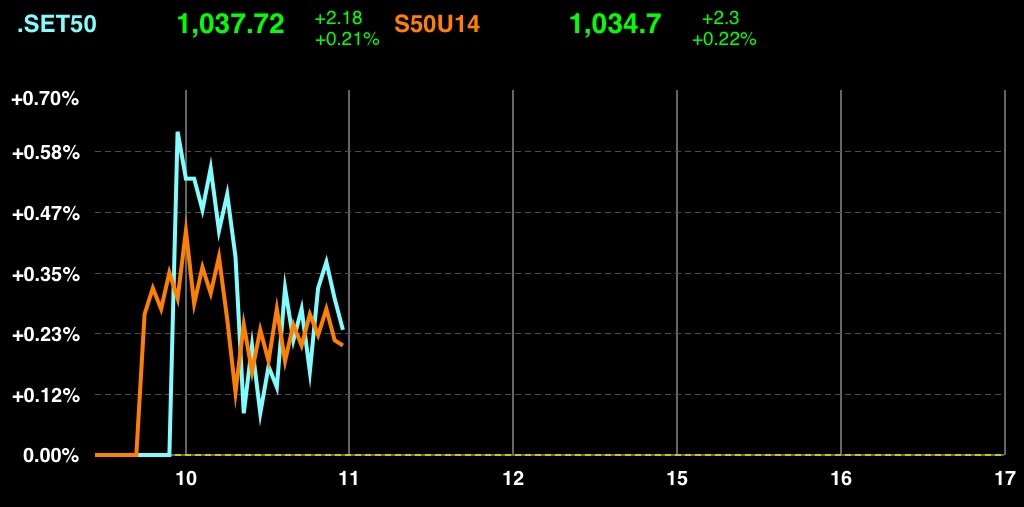http://www.theoptionsguide.com/futures-basis.aspx
Futures Basis
The basis reflects the relationship between cash price and futures price. (In futures trading, the term "cash" refers to the underlying product). The basis is obtained by subtracting the futures price from the cash price.
The basis can be a positive or negative number. A positive basis is said to be "over" as the cash price is higher than the futures price. A negative basis is said to be "under" as the cash price is lower than the futures price.
 Strong or Weak Basis
Strong or Weak Basis
The basis changes from time to time. If the basis gains in value (say from -4 to -1), we say the basis has strengthened. On the other hand, if basis drops in value (say from 8 to 2), we say the basis has weakened.
Short term demand and supply situations are generally the main factors responsible for the change in the basis. If demand is strong and the available supply small, cash prices could rise relative to futures price, causing the basis to strengthen. On the other hand, if the demand is weak and a large supply is available, cash prices could fall relative to the futures price, causing the basis to weaken.
However, although the basis can and does fluctuate, it is still generally less volatile than either the cash or futures price.
Basis Risk
Basis risk is the chance that the basis will have strengthened or weakened from the time the hedge is implemented to the time when the hedge is removed. Hedgers are exposed to basis risk and are said to have a position in the basis.
Long Basis Position
A long basis position stand to gain from a strengthening basis. Short hedges have a long basis position.
Short Basis Position
A short basis position stand to gain from a weakening basis. Long hedges have a short basis position.
ใน Streaming ก็มีให้ดูนะ

ตัวอย่างการเปรียบเทียบ ช่องว่างระยะห่างของ Basis ราคาสินค้า Underlying



ราคา Basis สำคัญไฉน ราคาฟิวเจอร์ถูกหรือแพงประเมินกันอย่างไร ????
Futures Basis
The basis reflects the relationship between cash price and futures price. (In futures trading, the term "cash" refers to the underlying product). The basis is obtained by subtracting the futures price from the cash price.
The basis can be a positive or negative number. A positive basis is said to be "over" as the cash price is higher than the futures price. A negative basis is said to be "under" as the cash price is lower than the futures price.
Strong or Weak Basis
The basis changes from time to time. If the basis gains in value (say from -4 to -1), we say the basis has strengthened. On the other hand, if basis drops in value (say from 8 to 2), we say the basis has weakened.
Short term demand and supply situations are generally the main factors responsible for the change in the basis. If demand is strong and the available supply small, cash prices could rise relative to futures price, causing the basis to strengthen. On the other hand, if the demand is weak and a large supply is available, cash prices could fall relative to the futures price, causing the basis to weaken.
However, although the basis can and does fluctuate, it is still generally less volatile than either the cash or futures price.
Basis Risk
Basis risk is the chance that the basis will have strengthened or weakened from the time the hedge is implemented to the time when the hedge is removed. Hedgers are exposed to basis risk and are said to have a position in the basis.
Long Basis Position
A long basis position stand to gain from a strengthening basis. Short hedges have a long basis position.
Short Basis Position
A short basis position stand to gain from a weakening basis. Long hedges have a short basis position.
ใน Streaming ก็มีให้ดูนะ
ตัวอย่างการเปรียบเทียบ ช่องว่างระยะห่างของ Basis ราคาสินค้า Underlying